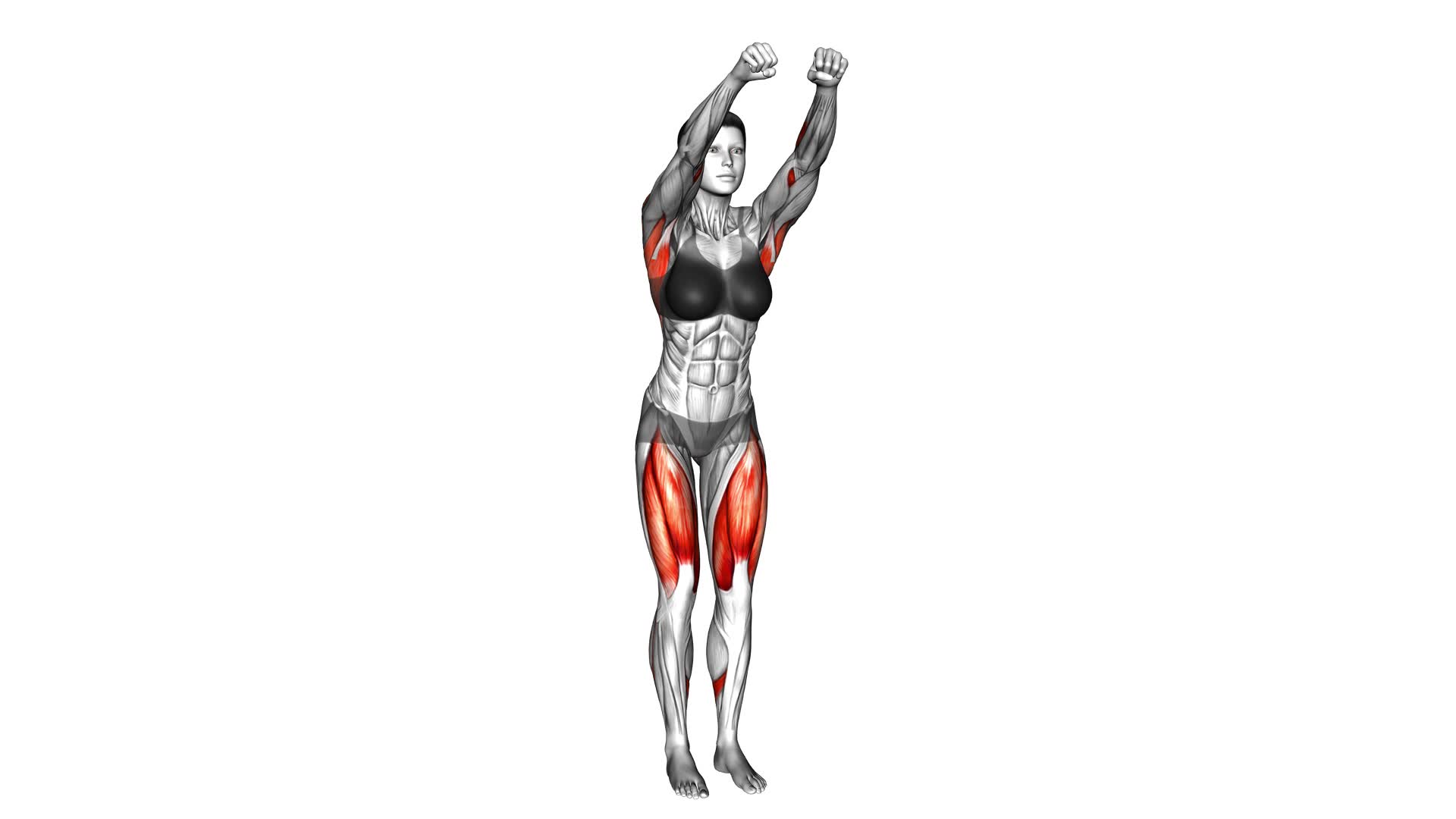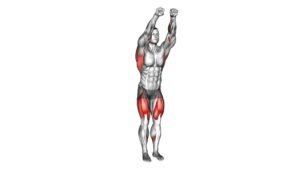Stepback Pulldown (female) – Video Exercise Guide & Tips

Are you looking to strengthen your upper body and improve your posture? Look no further than the stepback pulldown exercise.
Watch This Exercise Video
In this video exercise guide, we'll show you the proper form and technique for this effective move.
With variations and modifications to suit different fitness levels, you can customize your workout to meet your needs.
Maximize the benefits of the stepback pulldown and avoid common mistakes by following our expert tips.
Let's get started!
Key Takeaways
- Resistance bands and a sturdy anchor point are required for the Stepback Pulldown exercise.
- Different options for resistance bands should be considered based on the individual's fitness level and goals.
- Proper form and technique involve securing the resistance band, standing with proper posture, and engaging the core muscles.
- Variations and modifications of the exercise can be made to increase intensity or target different muscle groups.
Equipment Needed for Stepback Pulldown
To perform the Stepback Pulldown exercise, you'll need a resistance band and a sturdy anchor point. Resistance bands come in various options, such as different levels of resistance and handles for added comfort. When choosing a resistance band, consider your fitness level and goals. If you're a beginner, start with a lighter resistance band and gradually increase the intensity as you progress. On the other hand, if you're more advanced, a heavier resistance band will provide a greater challenge.
If you don't have access to a resistance band or prefer alternative exercises, there are other options to target the same muscles. You can use dumbbells or a cable machine to perform exercises like bent-over rows or lat pulldowns. These exercises work the same muscle groups as the Stepback Pulldown and can be effective alternatives.
Now that you know the equipment options and alternative exercises for the Stepback Pulldown, let's move on to discussing the proper form and technique for this exercise. Mastering the correct form is crucial to maximize the benefits and prevent injuries.
Proper Form and Technique for Stepback Pulldown
To perform the Stepback Pulldown exercise with proper form and technique, start by securing the resistance band to a sturdy anchor point at chest height. This will ensure that you have a stable base to work from and maximize the benefits of the exercise.
Here are three important tips to help you perform the Stepback Pulldown correctly:
- Stand with your feet hip-width apart and your knees slightly bent. This will provide a strong and stable foundation for the exercise.
- Grip the resistance band with both hands, palms facing down, and extend your arms straight out in front of you. This is your starting position.
- Engage your core muscles and take a step back with one foot, maintaining a slight bend in your knees. As you do this, simultaneously pull the resistance band towards your chest, squeezing your shoulder blades together. Keep your elbows close to your body throughout the movement.
By following these steps, you'll ensure proper form and technique while performing the Stepback Pulldown. This exercise targets your back muscles, specifically the lats and rhomboids, helping to improve posture and upper body strength.
Now, let's move on to the next section to explore some variations and modifications for the Stepback Pulldown.
Variations and Modifications for Stepback Pulldown
To modify the Stepback Pulldown exercise, try using a heavier resistance band for increased intensity. This variation will challenge your muscles even more and help you build strength. By using a heavier band, you're increasing the resistance and forcing your muscles to work harder. This can lead to greater gains in muscle size and strength.
In addition to using a heavier resistance band, there are also alternative exercises that you can try to target different muscle groups. For example, you can perform a traditional lat pulldown using a cable machine or a pull-up using a pull-up bar. These exercises will still work your back muscles but may engage different muscles to a greater extent.
The Stepback Pulldown exercise primarily targets the muscles in your back, specifically the latissimus dorsi, rhomboids, and trapezius. However, it also engages your biceps and forearms to a lesser extent. By incorporating this exercise into your routine, you can strengthen and tone these muscle groups, leading to improved posture, increased upper body strength, and a more sculpted back.
Remember to always listen to your body and adjust the intensity and resistance accordingly. Start with a lighter band and gradually increase the resistance as you become stronger. And don't forget to warm up properly before performing any exercise to prevent injury and maximize your workout.
Tips for Maximizing the Benefits of Stepback Pulldown
To maximize the benefits of the Stepback Pulldown, focus on maintaining proper form and technique throughout the exercise. Here are three tips that will help you get the most out of this exercise and enjoy its benefits:
- Incorporate Stepback Pulldown into a Full Body Workout: The Stepback Pulldown is a great exercise to include in your full body workout routine. By engaging multiple muscle groups, such as your back, shoulders, and arms, this exercise helps to improve overall strength and stability. To incorporate it effectively, pair it with other compound exercises like squats, lunges, and push-ups. This will provide a well-rounded workout that targets different areas of your body.
- Focus on Posture Improvement: One of the key benefits of the Stepback Pulldown is its ability to improve your posture. As you perform the exercise, pay attention to your posture and make sure you maintain a straight back and engage your core. By strengthening your back muscles, this exercise helps to counteract the negative effects of poor posture and promotes a more upright and aligned position.
- Gradually Increase Weight and Intensity: As with any exercise, progression is important to maximize the benefits. Start with a weight that challenges you but allows you to maintain proper form. As you become more comfortable and stronger, gradually increase the weight to continue challenging your muscles. Additionally, you can increase the intensity by performing the exercise at a slower tempo or adding pauses at different points of the movement.
Common Mistakes to Avoid During Stepback Pulldown
Avoid these common mistakes when performing the Stepback Pulldown to ensure proper form and maximize the benefits of the exercise.
One common mistake is using too much weight. While it may be tempting to load up the machine with heavy weights, it's important to remember that proper form is more important than the amount of weight lifted. Start with a comfortable weight and gradually increase it as your strength improves.
Another mistake to avoid is using momentum to perform the exercise. Many people tend to swing their bodies or jerk the weight in order to lift it. This not only reduces the effectiveness of the exercise but also increases the risk of injury. Instead, focus on controlling the movement and using your back muscles to pull the weight down.
Proper body positioning is also crucial. Make sure to maintain a neutral spine throughout the exercise. Avoid rounding your shoulders or arching your back, as this can put unnecessary strain on your spine. Keep your chest up and engage your core to stabilize your body.
Lastly, don't forget to breathe properly. It's common to hold your breath during challenging exercises, but this can lead to increased blood pressure and decreased oxygen supply to your muscles. Remember to inhale as you lower the weight and exhale as you pull it down.
Frequently Asked Questions
How Many Calories Does the Stepback Pulldown Exercise Burn?
The stepback pulldown exercise is a great way to burn calories and aid in weight loss. By incorporating this exercise into your routine, you can increase your calorie burn and boost your metabolism.
The stepback pulldown targets multiple muscle groups, helping you build strength and tone your upper body. Additionally, the dynamic movements involved in this exercise promote cardiovascular fitness.
Can Stepback Pulldown Help With Weight Loss?
Yes, the stepback pulldown can definitely help with weight loss. By incorporating this exercise into your routine, you can burn calories, build muscle, and increase your overall strength.
To maximize the weight loss benefits, focus on maintaining proper form and technique throughout the exercise. Additionally, consider incorporating modifications to make the exercise more challenging as you progress.
With dedication and consistency, the stepback pulldown can be a valuable addition to your weight loss journey.
How Often Should I Perform the Stepback Pulldown Exercise?
To get the most out of the stepback pulldown exercise, it's important to consider the frequency of your workouts. How often should you perform this exercise?
Well, it depends on your fitness goals and current fitness level. Generally, it's recommended to incorporate the stepback pulldown into your routine 2-3 times a week.
Is Stepback Pulldown Suitable for Beginners?
Yes, the stepback pulldown exercise is suitable for beginners. It's a great way to strengthen your back and improve overall fitness.
If you're new to this exercise, start with modifications such as using lighter weights or performing the movement without weights at first. This will help you build proper form and gradually increase the intensity.
With consistency and proper technique, you'll see improvements in your strength and fitness levels. Keep pushing yourself, and remember to listen to your body.
What Muscles Does the Stepback Pulldown Target?
Stepback pulldown is a great exercise that targets multiple muscles in your upper body. It primarily works your latissimus dorsi, which are the large muscles in your back responsible for pulling movements. Additionally, it engages your biceps, rhomboids, and rear deltoids.
The benefits of stepback pulldown include improved upper body strength and posture. There are also variations of this exercise, such as using resistance bands or performing it on a stability ball, which can add variety to your workout routine.
Conclusion
Incorporating the stepback pulldown into your workout routine can help you strengthen your back, improve your posture, and increase your overall upper body strength.
By following proper form and technique, using the right equipment, and incorporating variations and modifications, you can maximize the benefits of this exercise.
Remember to avoid common mistakes and stay motivated to achieve your fitness goals. Keep pushing yourself and enjoy the rewards of a stronger, healthier body.

Author
Years ago, the spark of my life’s passion ignited in my mind the moment I stepped into the local gym for the first time. The inaugural bead of perspiration, the initial endeavor, the very first surge of endorphins, and a sense of pride that washed over me post-workout marked the beginning of my deep-seated interest in strength sports, fitness, and sports nutrition. This very curiosity blossomed rapidly into a profound fascination, propelling me to earn a Master’s degree in Physical Education from the Academy of Physical Education in Krakow, followed by a Sports Manager diploma from the Jagiellonian University. My journey of growth led me to gain more specialized qualifications, such as being a certified personal trainer with a focus on sports dietetics, a lifeguard, and an instructor for wellness and corrective gymnastics. Theoretical knowledge paired seamlessly with practical experience, reinforcing my belief that the transformation of individuals under my guidance was also a reflection of my personal growth. This belief holds true even today. Each day, I strive to push the boundaries and explore new realms. These realms gently elevate me to greater heights. The unique combination of passion for my field and the continuous quest for growth fuels my drive to break new ground.



